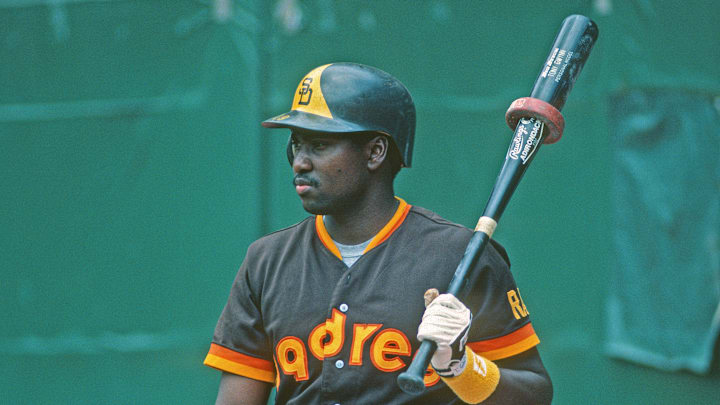There are great seasons, and then there are seasons that rewire a franchise’s DNA. For San Diego, 1984 was the latter. A 24-year-old right fielder with a craftsman’s swing and a point guard’s vision took center stage and turned line drives into a citywide ritual. Tony Gwynn didn’t just hit; he orchestrated. He beat shifts before they had names, wore out the gaps, and turned every at-bat into a lesson in timing and feel. By summer’s end, pitchers were out of ideas and Padres fans were out of adjectives.
What made it special wasn’t just the volume of hits but the way they arrived — precise, relentless, perfectly suited to a team ready to take its first giant step. With chaos on the bases in front of him and a clubhouse learning how to win in real time, Gwynn became the daily guarantee. You knew you’d get contact, you knew you’d get pressure, and you often got both before the starter had settled in.
How 1984 made Tony Gwynn a Padres offensive icon
Tony Gwynn’s first Silver Slugger landed in 1984 — his first full run as the Padres’ everyday right fielder and the first time San Diego really saw what that swing could do. He came out blazing, hitting .434 in April, and never took his foot off. By October, the ledger looked like a breakout on fast-forward: first NL batting title at .351, first All-Star nod, third in MVP, and the Silver Slugger that told the league he wasn’t just tough to get out, he was a problem every single night.
The stat line still hums: 158 games, a .351/.410/.444 slash, .853 OPS, 213 hits, 71 RBIs, 33 steals, and five homers. The power was measured in gaps and rallies rather than upper-deck tape, but it played loud because everything was on time. Pitchers threw him fastballs to avoid the running game and got carved up for their trouble. Batting behind burner Alan Wiggins, Gwynn feasted — he hit over .400 with Wiggins on base, turning first-and-third threats into routine outcomes. That wasn’t luck; it was design.
The biggest hit of a blossoming career. Tony Gwynn was well on his way to becoming #MrPadre.#PadresClassics pic.twitter.com/kcwmWy6uUX
— San Diego Padres (@Padres) May 4, 2020
Context made the numbers louder. San Diego stacked a franchise-record 92 wins, grabbed its first NL West flag, then ran right through the Cubs with Gwynn hitting .368 and finding the seams when it mattered. Bottom nine of Game 4? He flips a single, Garvey cashes it, and you’ve got the season in three beats: pressure, contact, finish. The Padres punched their first World Series ticket, and the city finally had a baseball identity with a face — speed, savvy, and line-drive damage.
Looking back, 1984 reads like an origin story and blueprint all at once. The Silver Slugger was the hardware; the true prize was everything it set in motion. Gwynn learned how his skills could tilt a division race, how patience and precision could become a team’s spine, and how a batting title could be less a peak than a starting point. It launched a Hall of Fame trajectory built on mastery, not mystery. And for the Padres, it proved that when Tony Gwynn was in rhythm, the whole city could hear the beat.
